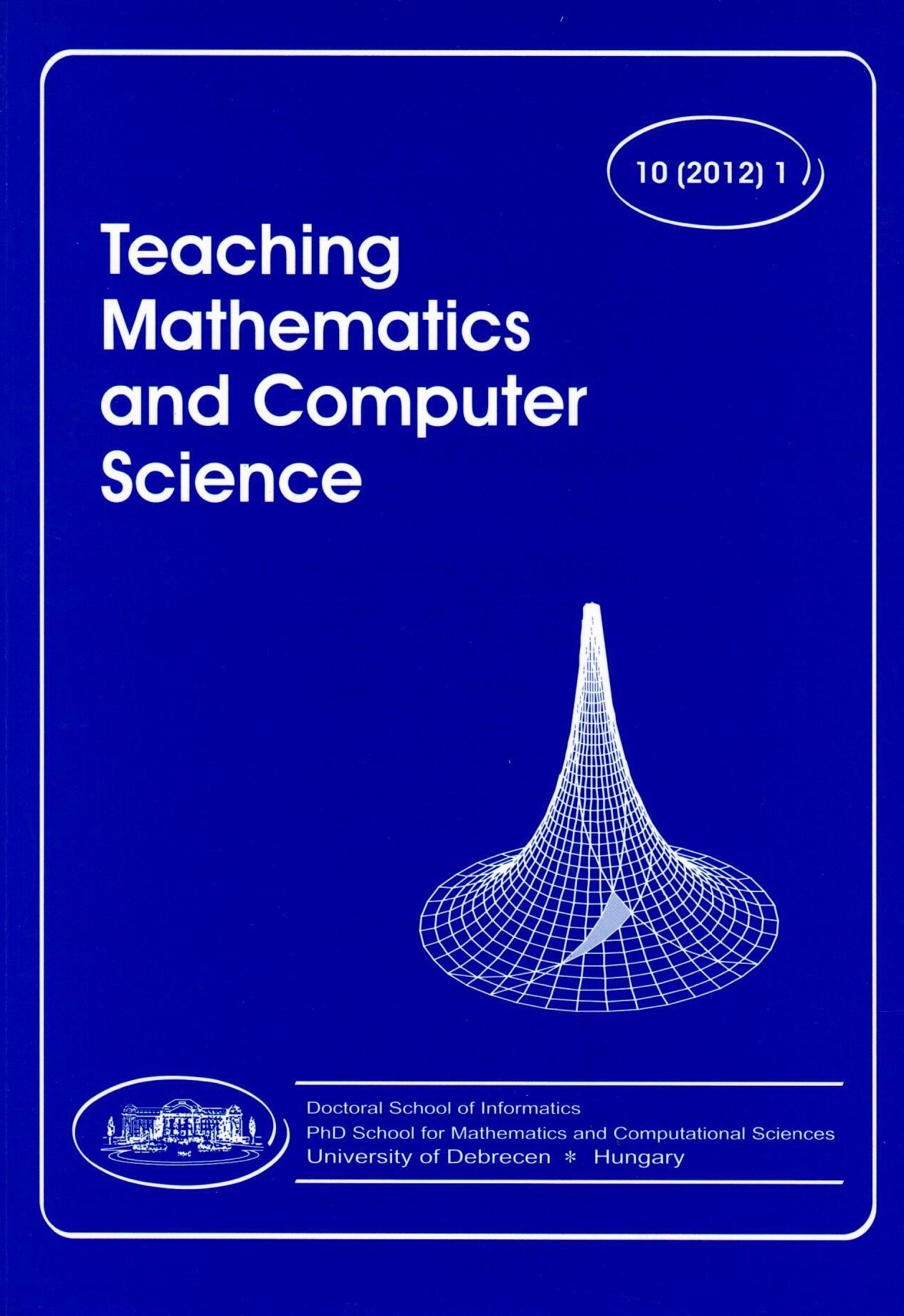Articles
Research studies in didactics of mathematics supported by the Operant Motive Test
Published:
2012-06-01
Author
View
Keywords
sociological aspects of learning (disadvantaged students) affective aspects (motivation) manipulative materials and their use in the classroom picture stories
License
Copyright (c) 2012 Katalin Munkácsy

This work is licensed under a Creative Commons Attribution 4.0 International License.
How To Cite
Selected Style:
APA
Munkácsy, K. (2012). Research studies in didactics of mathematics supported by the Operant Motive Test. Teaching Mathematics and Computer Science, 10(1), 153-173. https://doi.org/10.5485/TMCS.2012.0300
Abstract
The present paper reports a case-study which took place within an EUsupported international program organized for research and development of multi-grade schools (NEMED, [16] [26]). One of the main goals of the research was to develop the connection between disadvantageous social situations and the efficiency (success or failure) in learning mathematics especially from the point of view of average and above-average (talented) students: Why does the talent of children with socially disadvantageous background remain undiscovered? How can we make school mathematics more aware of hidden talents?
The author was looking for a didactical solution that compensated for social disadvantages without restricting the development of "average" students by using sociological, educational, psychological and mathematical (experimental and theoretical) studies in interaction with a series of experimental (hypothesis testing and exploratory) investigations.
We constructed tools and methods for exploration and experimental teaching, adapted to Hungarian conditions (Curriculum Development, teacher training, materials, interviews, Kuhl's motivation test, Malara's "researchers and practicing teachers in cooperation" method, etc., see [18], [20]).
The teaching materials and methodological guidelines are based on Bruner's representation theory (see [5]). The empirical research took place in 16 multi-grade schools located in different parts of the country. The author co-operated with nearly 250 students and 25 teachers for 3 years. In this paper we try to demonstrate how an Operant Motive Test can be involved in this research (see [18]).
The author was looking for a didactical solution that compensated for social disadvantages without restricting the development of "average" students by using sociological, educational, psychological and mathematical (experimental and theoretical) studies in interaction with a series of experimental (hypothesis testing and exploratory) investigations.
We constructed tools and methods for exploration and experimental teaching, adapted to Hungarian conditions (Curriculum Development, teacher training, materials, interviews, Kuhl's motivation test, Malara's "researchers and practicing teachers in cooperation" method, etc., see [18], [20]).
The teaching materials and methodological guidelines are based on Bruner's representation theory (see [5]). The empirical research took place in 16 multi-grade schools located in different parts of the country. The author co-operated with nearly 250 students and 25 teachers for 3 years. In this paper we try to demonstrate how an Operant Motive Test can be involved in this research (see [18]).

 https://doi.org/10.5485/TMCS.2012.0300
https://doi.org/10.5485/TMCS.2012.0300






